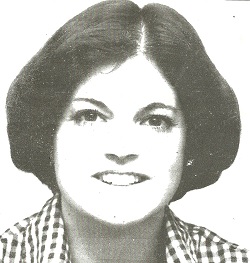4 Alternative Therapies That Help Lower Pain Levels
/By Barby Ingle, Columnist
This is the 11th month of my series on alternative therapies for chronic pain management. As I have stressed month after month, each of us is different, even if we are living with the same diseases. No one treatment works for everyone. We must find creative and effective ways to get our pain levels lower.
This month I am shining a spotlight on four treatments that may help you or your loved one in chronic pain: Quell, radiofrequency ablations, reflexology and sonopuncture, also known as sound therapy. I have tried all four of these treatments with varying degrees of success.
Quell
Quell is a wearable medical device that uses electric nerve stimulation to deliver relief from chronic pain. I have tried this device and passed it on to some of my friends with back, arthritis, nerve, leg and foot pain. For me, the relief was not as significant as I had hoped, but I have a friend who has used it daily for a year and swears that it helps her leg pain.
NeuroMetrix, the maker of Quell, designed the device to be worn on the upper calf muscle. It was small enough to wear under my sweatpants and not too big or bulky to get in the way. The device sends neural pulses through the central nervous system to the brain to trigger the body’s own pain blockers. It has a variety of stimulation patterns and sleep modes, and the intensity of therapy can be adjusted through an app.
If you have tried a TENS unit or Calmare and gotten some relief, this might be a successful tool to help you manage your pain. A Quell starter kit costs $249. Each unit comes with the device, leg band, two electrodes and charging cords. You have to replace the electrodes about every two weeks with normal use, but the battery is rechargeable.
I believe Quell is an option that is worth looking into and they have a 60-day moneyback guarantee if it doesn’t help you.
image courtesy neurometrix
Radiofrequency Ablation
Radiofrequency ablation (RFA) uses heat to stop the transmission of pain. Radiofrequency waves “ablate” or burn the nerve that is causing the pain. The nerve stops sending pain signals until it regrows and heals from the ablation. RFA is most commonly used to treat chronic pain caused by arthritis and peripheral nerve pain.
I had RFA procedures 36 times from 2005 to 2008. It never took my pain away but did lower my pain levels and helped take the edge off. The doctor performed them on the ganglion nerve bundle in my neck. My insurance covered the procedures and it was helpful in keeping the need for high dose pain medications down.
RFA procedures are typically done in an outpatient setting under local anesthetics or conscious sedation anesthesia. The procedure is done under guidance imaging, like a CT scan or by ultrasound machine, by an interventional pain specialist.
RFA is said to help in treating the desired nerve without causing significant collateral damage to the tissue around where the ablation is performed. Still, a patient should take precautions and understand that the ablation can cause trauma or injury to the body, and conditions such as CRPS or arachnoiditis can be exacerbated long-term with this treatment.
When I was having RFA, it was one of the only options I had access to. Once less invasive options became available to me, I opted to stop these and nerve blocks all together.
Reflexology
Reflexology involves the application of pressure to the feet and hands with thumb, finger, and hand techniques. Reflexology is very relaxing and calming for me but there is no consensus among reflexologists about how it works, and some technicians are better at it than others.
Practitioners believe that there are specific areas in the hands and feet that correspond with organs in the “zones” of the body. There are five zones on each half of the body that reflexologists work on. In theory, they help stimulate blood flow and better blood flow leads to better working organs and muscles
The research on reflexology is skimpy and it has not been proven as an effective treatment for any medical condition. It’s more of an approach to health lifestyle living, which can be of benefit to pain patients. This can help lower blood pressure and relax a pained body by taking the edge off.
I can say reflexology did seem to help with my constipation issues, but I was doing it while taking OTC and prescription strength medications, as well as stretching and stomach massages.
Sonopuncture
Sonopuncture is also known as vibrational or sound therapy. The idea behind it is similar to that of acupuncture, although instead of needles they use sound waves. Sonopuncture practitioners believe that sound waves stimulate the body into healing.
Sonopuncture was recently highlighted on an episode of “Keeping Up with the Kardashians” when Kendall Jenner was going through some anxiety challenges. I have used sound therapy myself to help with the stress of living with chronic pain and find it relaxing and mentally therapeutic.
Typically, the patient lays down in a comfortable position on the floor or a massage table. The practitioner will used tools like a tuning fork, glass bowls, chimes, metal or electronic devices that emit harmonic sounds or vibrations on acupressure points for about a minute each.
This is a noninvasive therapy and is suitable for all ages. Since no needles are involved, it could be seen as an alternative to acupuncture. With one in four patients afraid of needles, this could be a great way to calm your nerves and mind to help manage the challenges of living with chronic pain.
If you are considering any of these alternative treatments, I encourage you to first talk with a medical professional who is familiar with your past and present care and can help you discover what would be appropriate for you.
Barby Ingle lives with reflex sympathetic dystrophy (RSD), migralepsy and endometriosis. Barby is a chronic pain educator, patient advocate, and president of the International Pain Foundation. She is also a motivational speaker and best-selling author on pain topics.
More information about Barby can be found at her website.
The information in this column should not be considered as professional medical advice, diagnosis or treatment. It is for informational purposes only and represents the author’s opinions alone. It does not inherently express or reflect the views, opinions and/or positions of Pain News Network.




































